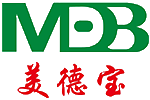-
-
Company Profile
-
Waterproof breathable membrane
Vapor barrier film
Barrier film
Reflective insulation film
The Benefits of Using TPO Waterproofing Membrane in Modern Building Designs
Release time:
2025-01-23
The Benefits of Using TPO Waterproofing Membrane in Modern Building Designs
In the ever-evolving landscape of **modern architecture**, selecting the right materials is crucial for the longevity and functionality of buildings. One such material that has gained immense popularity is the **TPO (Thermoplastic Olefin) waterproofing membrane**. This article delves into the multifaceted benefits of using TPO waterproofing membranes in contemporary building designs, showcasing their efficiency, durability, and eco-friendliness.
Table of Contents
- What is TPO Waterproofing Membrane?
- Benefits of TPO Waterproofing Membrane
- Durability and Longevity of TPO
- Energy Efficiency of TPO Membranes
- Cost-Effectiveness of TPO
- Eco-Friendly Approach with TPO
- Installation Process of TPO Membranes
- Maintenance of TPO Waterproofing Membrane
- Common Misconceptions about TPO Membranes
- TPO vs. Other Waterproofing Materials
- Conclusion
- FAQs
What is TPO Waterproofing Membrane?
TPO waterproofing membrane is a single-ply roofing membrane made from a blend of polypropylene and ethylene-propylene rubber. This innovative material is designed to provide exceptional waterproofing capabilities, making it an ideal choice for flat and low-slope roofs. TPO membranes come in various thicknesses and colors, allowing architects and builders to select options that best suit their project requirements.
Benefits of TPO Waterproofing Membrane
The adoption of TPO waterproofing membranes in modern building designs offers a myriad of advantages. Below, we delve deeper into some of the most significant benefits.
Durability and Longevity of TPO
One of the standout features of TPO membranes is their durability. Designed to resist punctures, tears, and impact, TPO membranes excel in various environmental conditions. The material's resistance to ultraviolet (UV) radiation minimizes wear and tear, which significantly extends the lifespan of the roofing system. On average, TPO membranes can last **20 to 30 years**, making them a long-term investment for any building.
Energy Efficiency of TPO Membranes
In an era where sustainability is paramount, TPO membranes shine for their energy efficiency. Many TPO products feature a reflective surface that helps to reduce heat absorption. This characteristic is particularly beneficial for buildings located in hot climates, as it can lead to lower cooling costs and a more comfortable indoor environment. By choosing TPO, builders can contribute to energy conservation and lower utility bills for occupants.
Cost-Effectiveness of TPO
While the initial cost of TPO membranes may be comparable to other roofing materials, their long-term cost-effectiveness is undeniable. The durability and low maintenance requirements of TPO membranes reduce the frequency of repairs and replacements. Furthermore, the energy savings realized through reduced heating and cooling costs can lead to significant financial benefits over time. Investing in TPO waterproofing is a smart choice for budget-conscious project managers and building owners.
Eco-Friendly Approach with TPO
As environmental concerns continue to rise, the importance of selecting eco-friendly materials cannot be overstated. TPO membranes are **100% recyclable**, making them an excellent choice for green building projects. Many manufacturers utilize recycled materials in their production processes, further minimizing the environmental impact. By using TPO, builders can adhere to sustainable practices and contribute to a greener future.
Installation Process of TPO Membranes
The installation of TPO waterproofing membranes is a straightforward process that can be performed by skilled contractors. The following steps outline the general installation procedure:
- Preparation: The roof surface must be clean, dry, and free of debris before installation.
- Insulation Installation: Insulating boards may be installed to enhance energy efficiency.
- Membrane Placement: The TPO membrane is rolled out across the roof surface, ensuring seamless overlaps.
- Attachment: The membrane can be mechanically attached, fully adhered, or ballasted, depending on the building’s design and local regulations.
- Seaming: The seams between membrane sheets are heat-welded to create a watertight seal.
Proper installation is critical to maximizing the performance of TPO membranes. Therefore, it’s essential to hire experienced professionals who understand the nuances of the material.
Maintenance of TPO Waterproofing Membrane
TPO membranes require minimal maintenance compared to traditional roofing materials. Routine inspections should be conducted, particularly after severe weather events, to identify any potential damage. Regular cleaning to remove debris, dirt, and algae buildup will help maintain the membrane's reflective properties. In the rare event of damage, repairs can be made easily by patching or welding the affected areas.
Common Misconceptions about TPO Membranes
Despite their growing popularity, several misconceptions about TPO membranes persist. Here are some of the most common myths debunked:
- Myth 1: TPO membranes are prone to fading and discoloration.
Fact: While some color change may occur, high-quality TPO materials are designed to resist UV degradation. - Myth 2: TPO is not suitable for all climates.
Fact: TPO membranes are versatile and perform well in various environmental conditions. - Myth 3: TPO membranes are expensive compared to other options.
Fact: TPO offers competitive pricing and long-term savings through durability and energy efficiency.
TPO vs. Other Waterproofing Materials
When considering waterproofing options, it’s essential to compare TPO membranes with other materials like EPDM, PVC, and Bitumen. Here’s a brief overview:
- EPDM: Known for its durability, EPDM membranes can last up to 30 years but may not offer the same energy efficiency as TPO.
- PVC: PVC membranes are highly resistant to chemicals but can be more expensive and less eco-friendly compared to TPO.
- Bitumen: Traditional bitumen roofing is cost-effective but typically requires more maintenance and has a shorter lifespan than TPO.
Overall, TPO strikes an excellent balance between durability, cost, and environmental impact, making it a favorable choice for modern building designs.
Conclusion
TPO waterproofing membranes are redefining the standards for modern building materials. Their durability, energy efficiency, cost-effectiveness, and eco-friendly properties make them an exceptional choice for architects and builders alike. As the demand for sustainable building solutions continues to grow, TPO will undoubtedly remain at the forefront of the industry. By selecting TPO membranes for your projects, you ensure long-lasting performance, enhanced energy efficiency, and a positive environmental impact.
FAQs
- What is the lifespan of a TPO waterproofing membrane?
The average lifespan of a TPO membrane ranges from 20 to 30 years, depending on installation quality and maintenance. - Can TPO membranes be installed over existing roofing materials?
Yes, TPO membranes can often be installed over existing roofs, provided the surface is adequately prepared. - Are TPO membranes resistant to ponding water?
Yes, TPO membranes are designed to handle ponding water, making them suitable for flat roofs. - How do TPO membranes compare to EPDM?
TPO membranes offer better energy efficiency and a lighter weight, while EPDM is known for its robust durability. - Is TPO roofing suitable for commercial buildings?
Absolutely! TPO is widely used in commercial applications due to its performance and cost benefits.
recommend News
All- All
- Product Management
- News
- Introduction
- Enterprise outlets
- FAQ
- Enterprise Video
- Enterprise Atlas
Sweep the attention to us

COOKIES
Our website uses cookies and similar technologies to personalize the advertising shown to you and to help you get the best experience on our website. For more information, see our Privacy & Cookie Policy
COOKIES
Our website uses cookies and similar technologies to personalize the advertising shown to you and to help you get the best experience on our website. For more information, see our Privacy & Cookie Policy
These cookies are necessary for basic functions such as payment. Standard cookies cannot be turned off and do not store any of your information.
These cookies collect information, such as how many people are using our site or which pages are popular, to help us improve the customer experience. Turning these cookies off will mean we can't collect information to improve your experience.
These cookies enable the website to provide enhanced functionality and personalization. They may be set by us or by third-party providers whose services we have added to our pages. If you do not allow these cookies, some or all of these services may not function properly.
These cookies help us understand what you are interested in so that we can show you relevant advertising on other websites. Turning these cookies off will mean we are unable to show you any personalized advertising.
Copyright: Tianjin Medabao Technology Co., Ltd.
Business License
-


